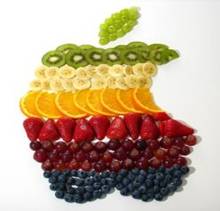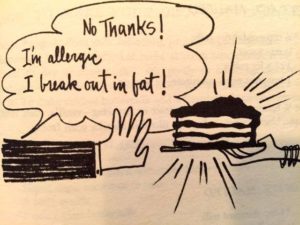With Halloween now come and gone, yet another holiday season begins. Just like with Pavlov’s dog, a looming holiday season brings thoughts of cookies and cakes, turkey and trimmings, pumpkin and pecan pies. Moreover, with racing season on the low down, it is easy to pack on the off season pounds.
With a survival guide and a plan of action you do not have to forego the traditions and feasts of this time in order to remain at competing weight. In essence, match your nutrition choices to the specific requirements of being in recovery at the macro level. What this means is: eat in accordance with THAT DAY’s training levels. The difference in energy expenditure between a day off and even a moderate training day can be enormous.
Holiday survival modifications add up and are helpful in maintaining your race weight. Making small changes even on a daily basis helps compensate for variance in activity factor and caloric expenditure. These tips focus on the best weight management strategies during the holiday season to maintain the optimal weight or body composition for the training season.
Many athletes do not know how to reduce the caloric intake when training duration and intensity subsides once racing season is over. Caloric deficit at this time is crucial for weight maintenance because not only are you burning less calories but the holiday season is notorious for caloric dense foods.
Some simple tips to note the calories and still partake in the festivities:
MAINTAIN CALORIC BALANCE
- Even if you are continuing a strength training regimen, cut out the use of sports nutrition energy bars, drinks and gels, which are formulated for endurance (such as endurox, accelerade, gu, etc).
- Be aware of caloric dense foods versus nutrient dense foods. In place of the bars, opt for the earthy, clean alternatives such as (non-processed) fruits, vegetables and whole grains which are more nutrient dense as opposed to calorie dense bars and gels. Dense carbs that were important for glycogen restoration, such as power bagels, can be replaced with lighter, lower calorie whole grain breads, such as whole grain English muffins or whole wheat pasta and brown rice.
KEEP METABOLISM FUELED
- Do not go to seasonal gatherings hungry. Hunger is a strong physiological drive and thus giving in to temptation is highly likely when your brain is not fed. Metabolism is raised when you eat every 2 to 3 hours. Keep up with this philosophy even through the season. Do not save calories for a big festive meal. Have a snack or light meal and drink plenty of water before facing a huge buffet. Having a full stomach aids in appetite suppression.
- Eating every few hours also means keeping portion size appropriate. You may have gotten used to eating larger portion sizes while training and old habits die hard. Remember, ½ cup cooked pasta, rice or potatoes is a realistic serving size for weight maintenance, but these portions may seem tiny when you are faced with festive meals. PAY ATTENTION. As little as 100 extra calories per day can amount to an increase in 15 lbs of fat gain between Thanksgiving and New Year.
REMAIN ACCOUNTABLE TO YOUR TRAINING WEIGHT
Being accountable to weight management during this time may seem unfestive, but that is just the point – do not use the “holiday season” as an all out excuse. After all, it’s a holiday, not a holimonth.
Plan ahead. Willpower requires boundaries. Create your own boundaries before you even head out the door to temptation. Be strong, give yourself some tough love. Fuzzy lines like “I will stop eating when I am full” do not work. Your boundaries have to be precise and measurable. For example: I will not eat anything fried, I will only drink 4 oz of alcohol.
Use visualization. Remember last year, when you walked away from a party feeling uncomfortably full and regretful, anticipating those extra pounds you now have to burn off in preseason. Visualize leaving the party feeling proud and liberated about your choices. Visualize preseason training days at your optimal training weight.
Journal – Commit to keeping a food journal and an exercise journal (and for many, a parallel emotional journal is a great bonus). By writing down everything you eat and drink, not only are you self accountable, but you become aware of the hidden calories and fat grams creeping in. Journaling both food and exercise helps you monitor calories in against calories burned. This helps nip over indulgence in the bud.
Physical Activity – Even with a good nutrition plan, some wiggle room is necessary. For many endurance athletes, the winter months are considered off season. Even if its minimal compared to racing season, some physical activity will help burn off some of those extra calories.
If you are completely off training, try speed shopping. Lace up your sneakers and move. Before you know it your shopping will be done. If your best laid plans take a hit, remember that it takes at least 45 minutes of high intensity cardio to burn off a small slice of pecan pie. OUCH!
Put Alcohol into Perspective – Alcohol goes hand in hand with celebrations. Do not forget that alcohol adds calories, in fact per gram, it has more calories than carbohydrates and protein. A 12 oz. beer is equal to 150 calories. A 5 oz. glass of wine, 100 calories, a 12 oz. wine cooler is around 180 calories, and spirits at 80-proof is over 100 calories per ounce and that is minus the drink mixers. One drink a day adds over 1000 calories per week. During the holiday season alone, this means at least 3 extra pounds of fat.
Furthermore, it is not just the caloric density and sugars of alcohol that need to be accounted for. Although alcohol is considered a carbohydrate, it metabolizes quite differently than food carbohydrates. It is converted to fatty acids -which have a higher potential of fat storage – rather than being converted to glucose, like regular carbohydrates. In simple terminology, alcohol puts efficient fat burning on hold. If your off season goal is to stay lean, stay off the booze. One way to nip the unwanted fat gain in the bud – nominate yourself to be a designated driver.
Compromise – Never give up your cultural traditions or social aspirations in lieu of your body composition goals. In other words, do not stay away from the party in fear of resisting temptation. Plan out the compromise and go to the party regardless. Remember the adage: The party does not have to be in your mouth. Staying away from temptation altogether may cause you to feel intensely deprived later down the line. Emotional eating is more difficult to control than a few slip ups at holiday parties. As a host, you can always give the tempting leftovers to guests or better yet, take them to homeless shelters.
Whether you are a host or a guest, you can always bring something to the table that is appetizing, delicious, and a substitute for high caloric, nutrient free options. Some cooking or baking substitutes in recipes include: replacing regular butter, cream, sour cream, cream of mushroom soup, cheese, etc., with nonfat or low fat options, replace cream with evaporated skim milk, replace whole eggs with egg whites (you may need an extra egg white or two), replace ice cream with frozen yogurt, replace heavy whipping cream with a 1:1 ratio of flour whisked into non fat milk (eg.1 cup of flour + 1 cup of non fat milk), use apple sauce and/or cinnamon as a topping instead of cream or butter.
NO REGRETS
If you do decide to weigh yourself after a party, even if your over indulgence was minimal, keep your head in the right place. Getting on a scale the morning after may add as much as 2 to 4 lbs. These numbers could lead you into a whirlwind of regret, minimizing your chances of enjoying the rest of the season. A few extra pounds show up after you have carbo-loaded your muscles. With each 1 gram of glycogen, 3 grams of water get stored. If you have not been able to resist all temptation, use it to your advantage. Water weight is the first load of poundage to drop off with physical activity. There is no better motivation than this for a post party work out.
BOTTOM LINE
It is not uncommon for athletes to get caught up in the temptations of the season, more so because of the hard core discipline the rest of the year. This mind set may make gearing up for a new season with an optimal weight rather difficult. However, be realistic, enjoy the traditions, embrace the culture, but keep your goals in focus all the time. These basic nutrition tips should hopefully provide a realistic view of the season’s offerings and thus aid in weight management post season.
Leave a comment and let us know your Holiday Weight Challenge Tips! Select Subscribe below the comment and we will send you everyone’s tips.





















